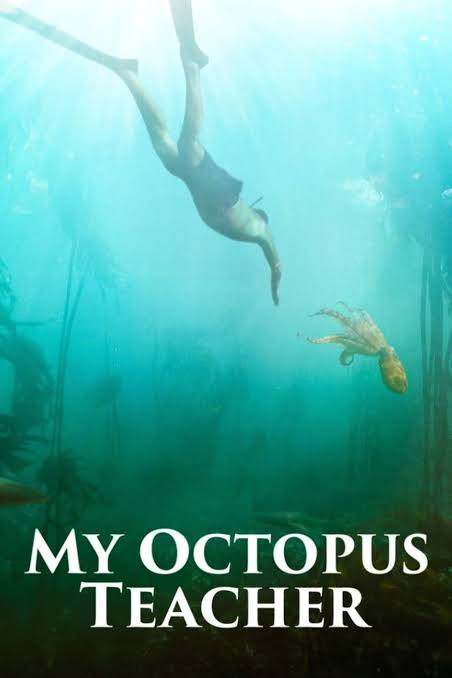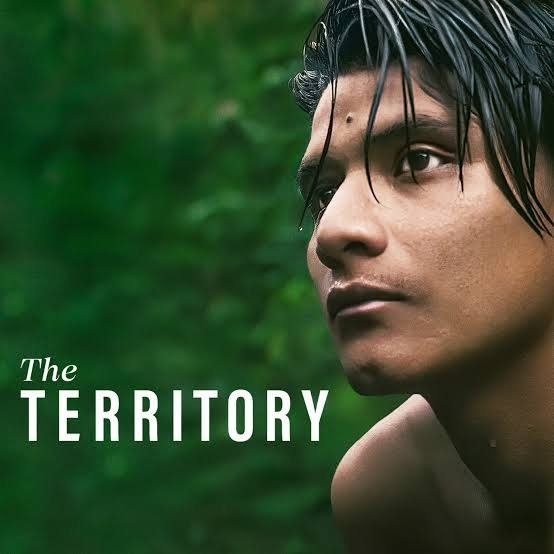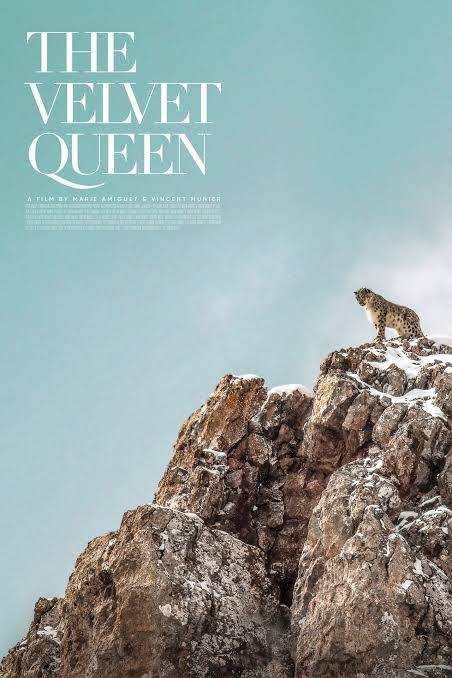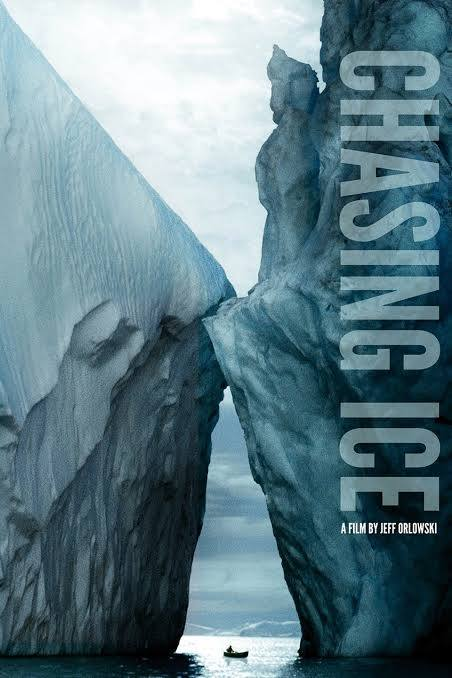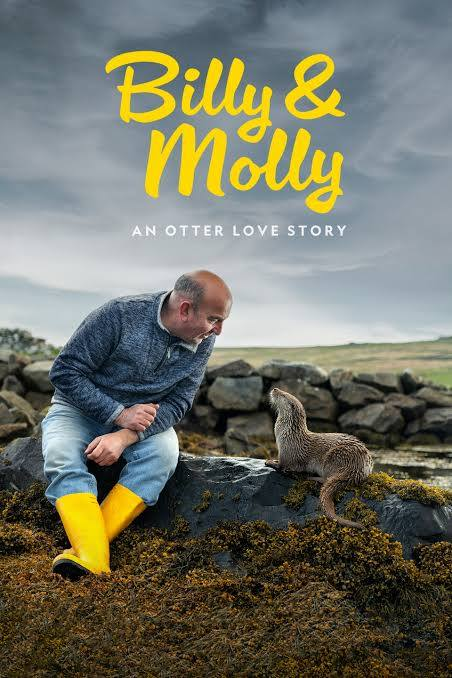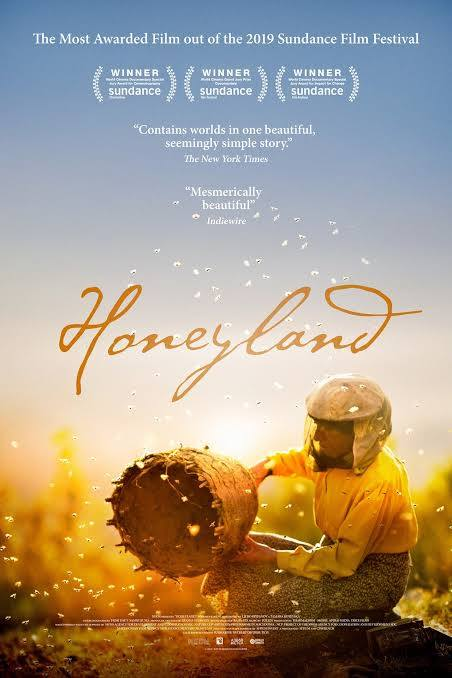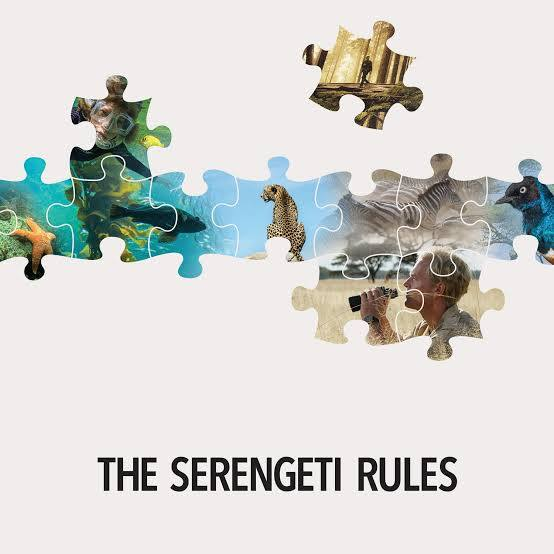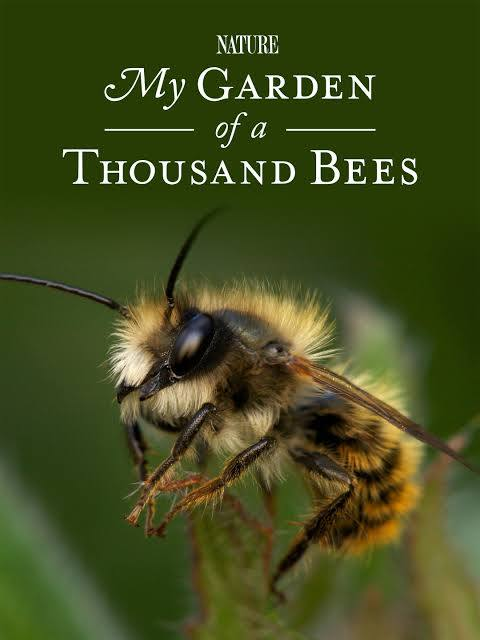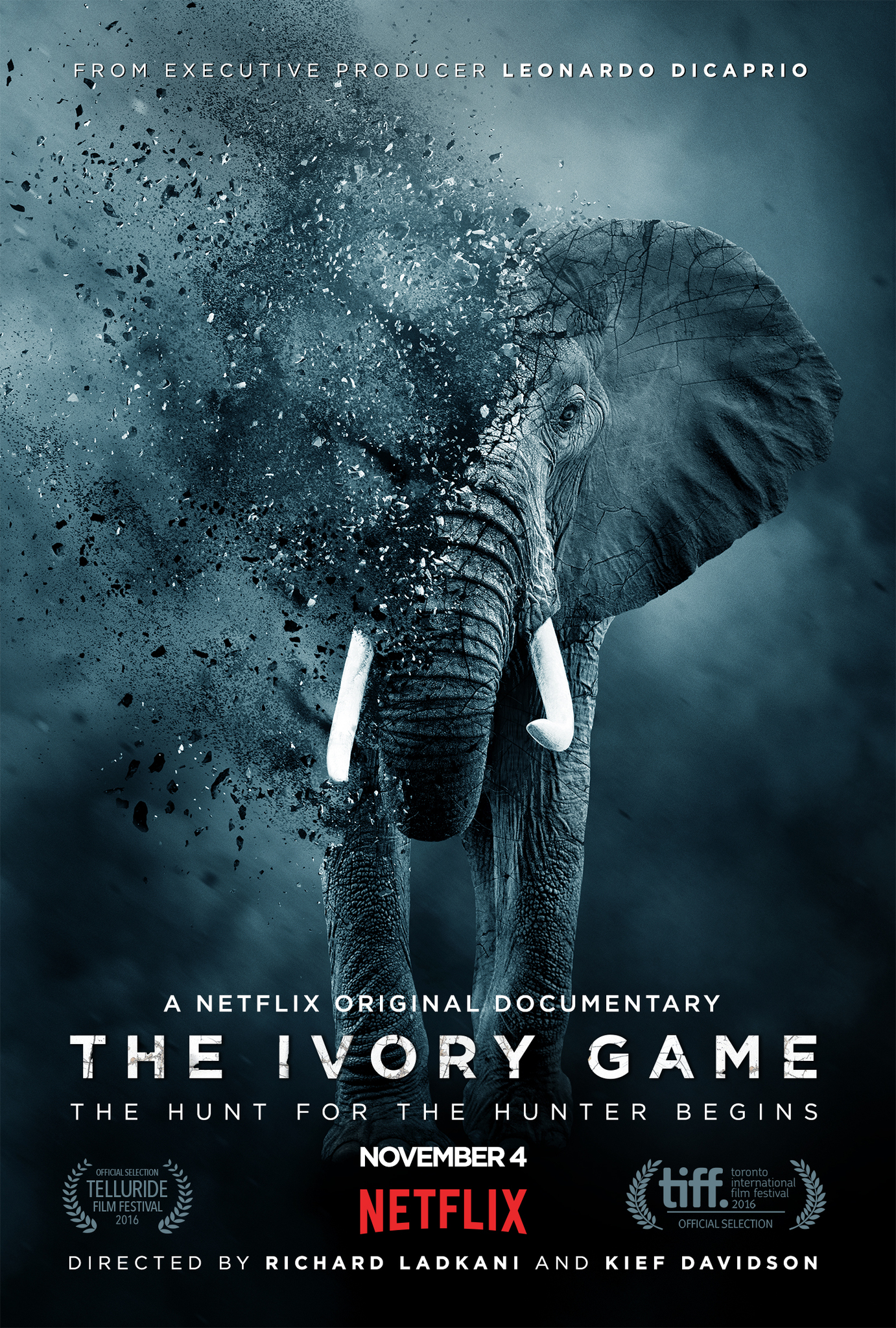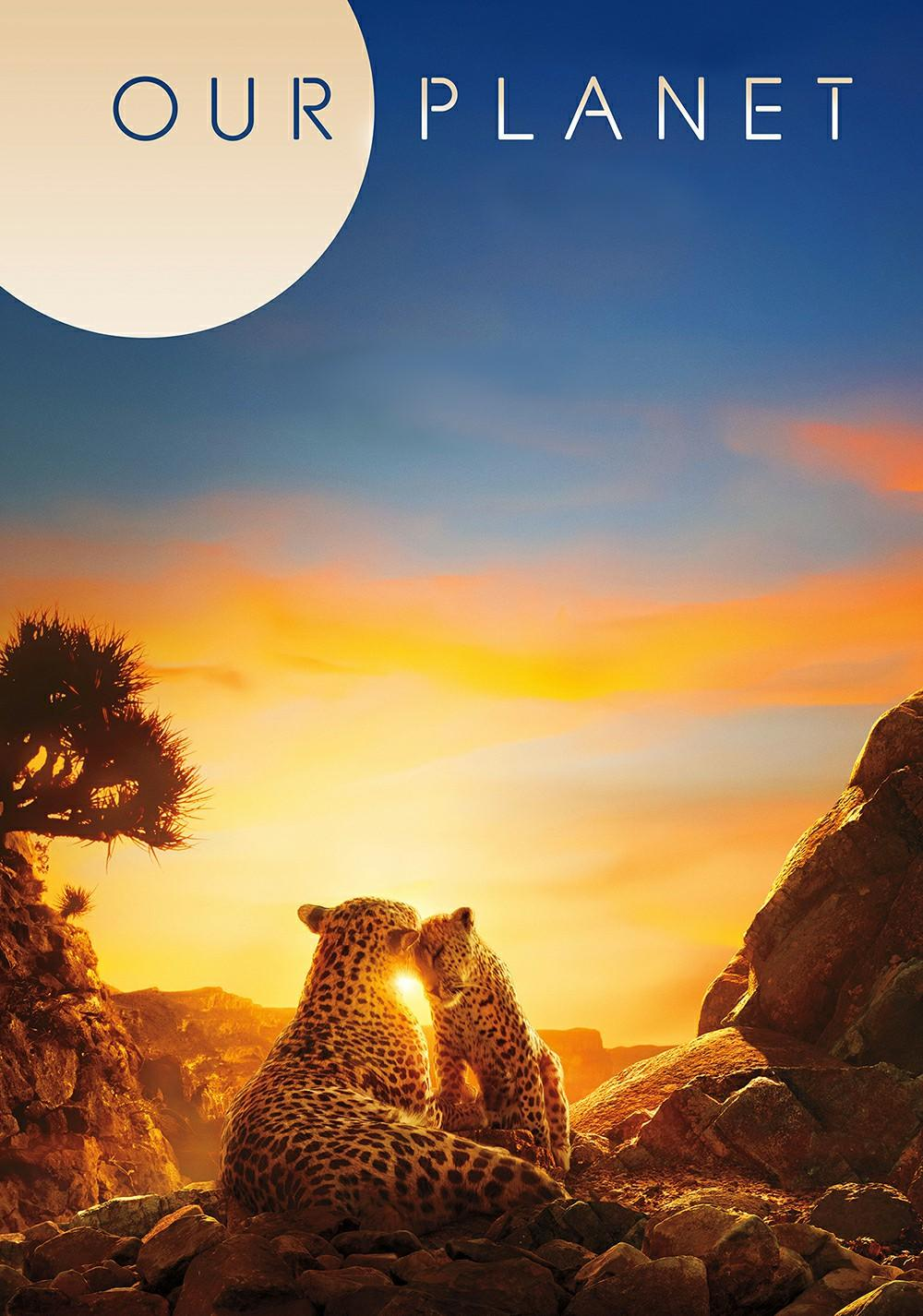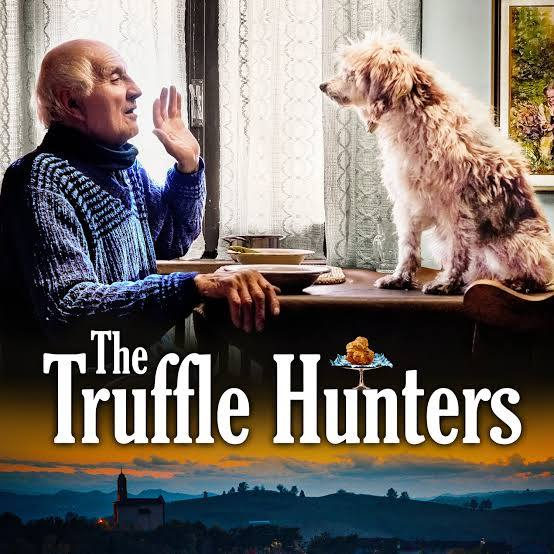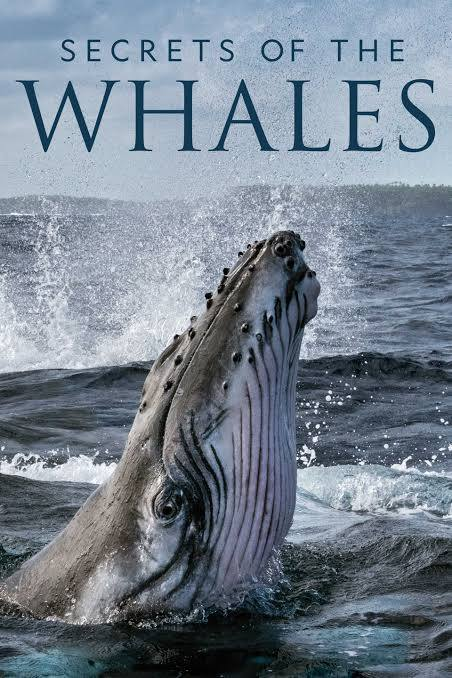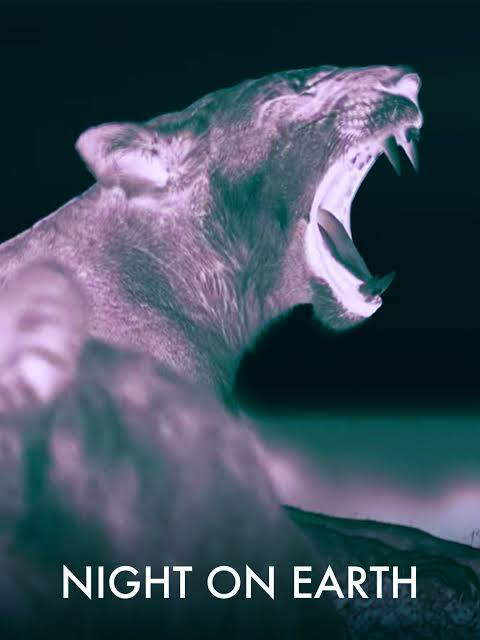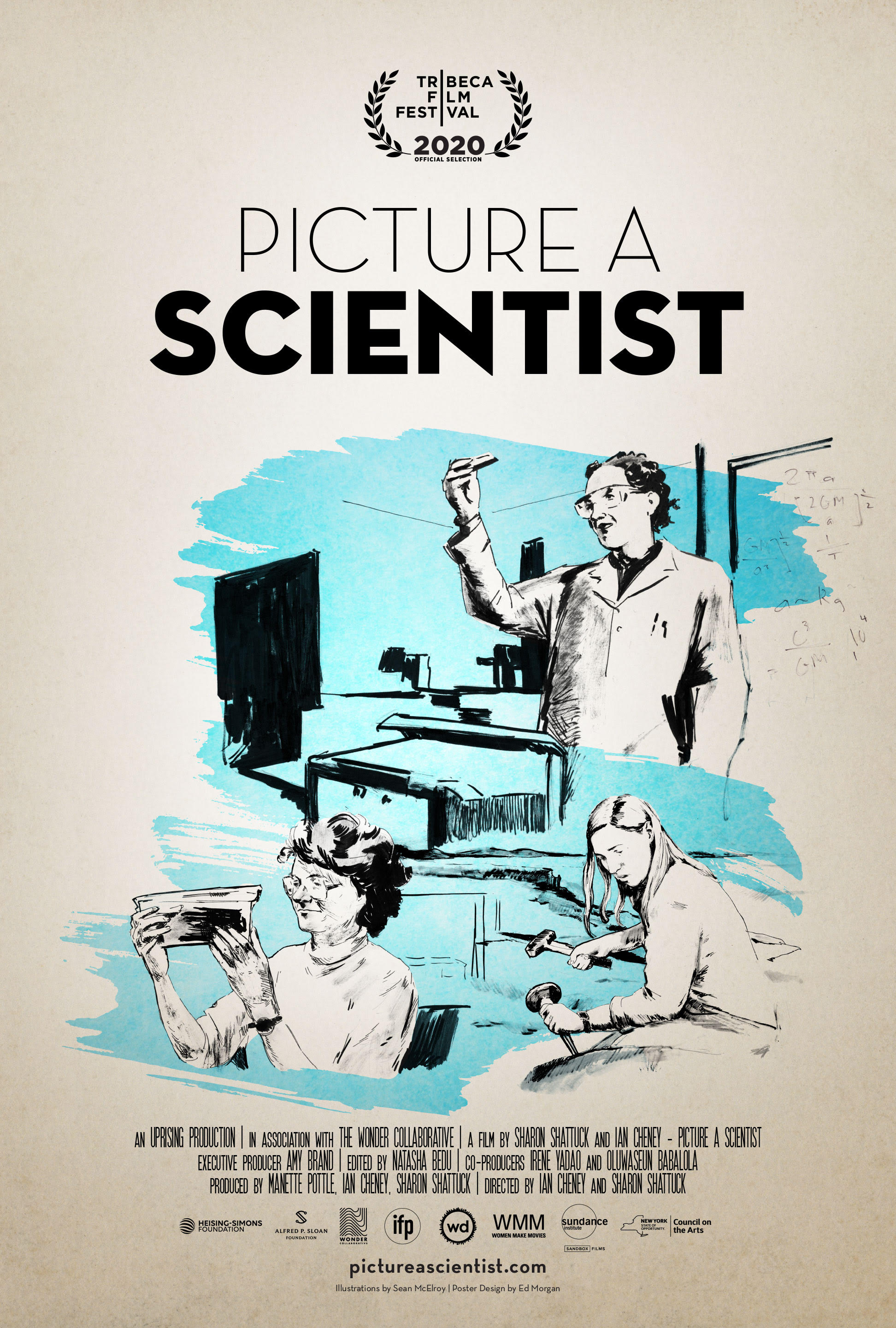20 Nature Documentaries Every Science Filmmaker Should Study (And You Should Watch)
After spending years behind the camera creating science documentaries, including our recent work on Kelp Currency with Scripps Institution of Oceanography, we've learned that the best nature films do something most viewers never notice: they make the invisible visible.
While audiences see breathtaking landscapes and charismatic animals, filmmakers see the thousands of decisions that create emotional impact. The choice to film a hunting sequence in slow motion versus real time. The decision to follow a single animal's story versus showcasing ecosystem complexity. The balance between scientific accuracy and narrative drama that can make or break a film's conservation message.
This list isn't just about the "best" nature documentaries, it's about the films that changed how science stories get told. Some pioneered filming techniques that are now considered standard. Others cracked the code on making climate change emotionally urgent rather than academically abstract. A few proved that audiences will embrace complex scientific concepts when wrapped in compelling characters and stakes.
From a science filmmaker's perspective, these 20 documentaries represent masterclasses in visual storytelling, scientific translation, and conservation messaging. Whether you're a fellow creator studying the craft or a viewer who wants to understand why certain nature films stick with you long after the credits roll, these selections reveal the intersection of art, science, and advocacy that defines the genre's most powerful work.
The gold standard of nature docs. Narrated by David Attenborough, this BBC series set a new benchmark with its stunning visuals and global scope.
Where to watch: Discovery+, Amazon Prime, BBC
Planet Earth is without a doubt one of the greatest science doc series of all time! This landmark BBC production took five years to film across 62 countries, capturing Earth's most spectacular habitats with unprecedented clarity. From the aerial ballet of birds of paradise to snow leopards hunting in the Himalayas, each episode explores a different biome with breathtaking cinematography.
What makes Planet Earth truly special is how it combines technical innovation with storytelling mastery. The series pioneered filming techniques that have become industry standards, while Attenborough's narration provides the perfect emotional framework for understanding our planet's delicate balance.
There’s a reason Planet Earth remains one of the most celebrated nature documentaries of all time; this 11-part series was the first to capture high-definition footage of Earth's most remote and untamed corners.
The cinematography was so groundbreaking at the time that it helped redefine what was possible in wildlife and science filmmaking.
Why Watch:
If you’ve ever wanted to feel truly small—in the best way—Planet Earth delivers that sense of awe and humility that only nature can. It’s the gold standard of the genre.
An unexpectedly emotional dive into friendship with a wild octopus. Winner of the Academy Award for Best Documentary.
Where to watch: Netflix
Unlike traditional nature documentaries, My Octopus Teacher is deeply personal. It follows filmmaker Craig Foster's year-long relationship with a wild octopus in the kelp forests off South Africa's coast, documenting not just the remarkable intelligence of his cephalopod friend but also Foster's own emotional transformation.
The film's intimate approach revolutionizes how we think about human-animal connections. Through daily dives without scuba gear or protective equipment, Foster forms a bond that challenges our understanding of interspecies relationships. The result is both a scientifically fascinating look at octopus behavior and a moving meditation on connection, vulnerability, and healing through nature.
This Oscar-winning documentary is unlike anything else on this list.
You definitely won’t want to miss watching this one.
Why Watch:
Raw, poetic, and unexpectedly moving, this film is a love letter to the natural world, and a reminder of how much we have yet to understand.
A gripping portrait of Indigenous resistance and environmental defense in the Amazon, told with unprecedented access and urgency.
Where to watch: Disney+ (via National Geographic), Hulu
Set in Brazil’s Uru-Eu-Wau-Wau territory, this award-winning documentary offers a dual perspective on the escalating fight over the Amazon rainforest. Co-produced by Indigenous activists, it follows 18-year-old Bitaté and his community as they train to use drones, cameras, and media to document illegal logging and invasions of their land.
At the same time, the film includes candid footage of settlers—landless farmers and would-be ranchers—who justify their encroachment as economic survival. This choice refrains from villainizing and instead highlights the complex social forces at play: politics, poverty, climate collapse, and systemic neglect.
Visually stunning and emotionally intense, The Territory is both an act of storytelling and an act of resistance. It centers Indigenous voices not as victims, but as fierce protectors of a living, breathing world that is being destroyed in real time.
Why Watch:
Essential viewing for anyone concerned with climate justice, Indigenous sovereignty, and the global fight over natural resources. A powerful and immersive frontline documentary.
A meditative wildlife quest set on the Tibetan Plateau. Photographer Vincent Munier and writer Sylvain Tesson search for the elusive snow leopard.
Where to watch: Amazon Prime, Apple TV, YouTube
The Velvet Queen is a quiet, contemplative journey into one of the world’s most remote landscapes. Rather than relying on action or suspense, the film unfolds with patience and reverence, inviting viewers to embrace stillness. The camera lingers on sweeping vistas, tiny creatures, and the space between sightings, mirroring the predator it pursues.
Tesson’s philosophical narration adds poetic depth, reflecting on human estrangement from the wild and the ancient presence of animals in myth and memory. The snow leopard becomes a symbol of beauty, mystery, and the need to observe without interfering.
Why Watch:
A stunning blend of visual poetry and existential reflection. Perfect for those who value quiet observation and deep thinking about nature’s hidden wonders.
Narrated by David Attenborough during the pandemic lockdown. A unique look at how wildlife rebounded while humans stayed indoors.
Where to watch: Apple TV+
This timely documentary explores an unprecedented natural experiment: what happens when human activity suddenly pauses across the globe? Filmed during COVID-19 lockdowns, The Year Earth Changed documents remarkable wildlife responses—from penguins wandering empty South African streets to whales communicating in suddenly quiet oceans.
What makes this film especially powerful is how it reframes our relationship with nature. Rather than focusing only on human damage, it reveals how quickly natural systems can recover when given space, offering hope and practical insights for coexistence. At just 48 minutes, it delivers an emotional punch and concrete vision for a more balanced future that few longer series achieve.
It’s a powerful glimpse into how our presence impacts the planet and what small changes could mean for long-term environmental recovery.
Why Watch:
It’s a hopeful, inspiring perspective shift, proving the resilience of the natural world.
A visual wake-up call on climate change. Follows environmental photographer James Balog's time-lapse project capturing glacial retreat.
Where to watch: Amazon Prime, YouTube
Chasing Ice transforms abstract climate data into visceral imagery through the Extreme Ice Survey. This was a multi-year project using time-lapse cameras to document vanishing glaciers across the Arctic. The result is undeniable visual evidence of our changing planet.
The documentary's power comes from its combination of breathtaking beauty and heartbreaking loss. Massive calving events with glacier chunks the size of Manhattan break off into the ocean are simultaneously spectacular and devastating. Balog's personal journey from skeptic to climate advocate, including his physical struggles to maintain the cameras in extreme environments, adds a compelling human element to this urgent environmental story.
It brings climate change into stark focus through beautiful yet alarming visuals.
Why Watch:
A must-watch for environmentalists and skeptics alike. It shows change in real time.
A heartwarming true story about a wild otter that forms an unlikely bond with a man recovering from illness on the Scottish coast.
Where to watch: Disney+ (via National Geographic)
After a stroke leaves him emotionally adrift, Billy Mail begins daily walks along the remote shorelines near his home. There, he meets a lone otter. What follows is an extraordinary relationship of mutual curiosity and healing. We find an animal choosing to trust a human, and a human finding purpose in the wild.
Beautifully shot against the backdrop of the Hebrides, the film blends rugged nature cinematography with emotional intimacy. Molly the otter is captured with grace and respect, and her interactions with Billy are never forced or anthropomorphized. Instead, the film lets the slow unfolding of trust speak for itself.
Directed with sensitivity and restraint, this is as much a story about recovery and love as it is about wildlife. It’s proof that the most powerful animal encounters can happen quietly, outside the frame of science or spectacle.
Why Watch:
A soul-soothing, quietly profound story about healing through connection with the natural world. A gentle antidote to overstimulating wildlife media.
An intimate portrait of a Macedonian beekeeper balancing traditional practices with ecological stewardship.
Where to watch: Hulu, Amazon Prime, Apple TV+ (Tubi)
Hatidze Muratova lives with her elderly mother in a remote village, harvesting honey using ancient methods that protect the bees. When a nomadic family moves nearby and disrupts the ecosystem through overextraction, tensions rise and ecological balance begins to collapse.
Honeyland is a masterclass in observational storytelling. It captures both the tenderness of Hatidze’s relationship with her bees and the slow encroachment of modernity. With no interviews or narration, the film lets conflict and resilience unfold naturally, weaving themes of sustainability, tradition, and survival.
Why Watch:
This is a must watch on our list. A quietly powerful tale of one woman’s connection to nature and what happens when that harmony is disrupted. It’s as much about people as it is about bees.
Biology meets beauty. A look at five scientists who uncovered ecological rules that could help restore damaged ecosystems.
Where to watch: PBS, Amazon Prime
The Serengeti Rules explores a revolutionary idea in ecology: that nature is governed by a set of rules that can be discovered, understood, and potentially used to heal damaged ecosystems. It’s a closer look at biology compared to many of the others on this list. Following five pioneering scientists across decades of research, this documentary shows how they identified "keystone species" whose presence or absence dramatically affects entire environments.
What makes this film special is how it transforms complex science into a hopeful narrative about ecological recovery. Through stunning visuals of restored ecosystems, from Yellowstone's wolves to sea otters in Pacific kelp forests, viewers witness nature's remarkable capacity for healing when key species return. The film offers a rare positive vision for conservation based on rigorous science rather than just emotional appeals.
Part science history, part inspirational call to action, it shows how knowledge can lead to large-scale ecosystem restoration.
Why Watch:
It gives you tools to understand how nature works and how we can help fix what we've broken.
A wildlife filmmaker finds unexpected wonder in his small city garden by turning his lens to the secret lives of native bees.
Where to watch: PBS Nature, Amazon Prime
During the COVID-19 lockdown, acclaimed wildlife cinematographer Martin Dohrn set up cameras in his modest urban garden in Bristol, England. What began as a personal quarantine project evolved into a revelatory portrait of over 60 species of wild bees, each with distinct behavior, charm, and ingenuity.
Dohrn’s film turns the ordinary into the extraordinary, revealing tiny dramas and relationships playing out in flowerbeds and wall cracks. From leafcutters to mason bees to parasitic cuckoo bees, the diversity is dazzling, and the level of detail - achieved with custom-built macro lenses—is astonishing.
But this isn’t just about insect close-ups. The film quietly explores themes of solitude, patience, and rediscovery. As Dohrn narrates his growing connection to the bees, we witness the healing potential of close observation and of finding wilderness in overlooked places.
Why Watch:
A gentle, beautifully filmed reminder that nature is everywhere; we just have to slow down and look. A balm for nature lovers and an invitation to rediscover the life buzzing just outside your door.
Dive into Earth's oceans like never before. This Attenborough-narrated series reveals the drama, beauty, and secrets of marine life.
Where to watch: Discovery+, BBC
The Blue Planet takes viewers on an unprecedented journey into our planet's least explored realm. Covering everything from familiar coastal waters to the mysterious dark of the deep sea, this series revealed marine behaviors and species never before filmed.
What sets this documentary apart is how it transforms an alien world into something deeply relatable. It’s amazing that these environments that cover 70% of our planet yet remain largely unknown to most humans.Through intimate storytelling, viewers witness the complex social lives of dolphins, the hunting strategies of orcas, and the otherworldly creatures of the deep ocean floor.
Narrated by David Attenborough, this series makes the ocean feel like another planet entirely. Its soundtrack by George Fenton and the London Philharmonic Orchestra adds a layer of grandeur to every scene.
Why Watch:
It's an underwater odyssey that leaves you speechless. No documentary captures the surreal magic of ocean life better.
Part thriller, part exposé. This Netflix doc follows undercover investigators fighting the illegal ivory trade.
Where to watch: Netflix
The Ivory Game blends wildlife documentary with investigative journalism to expose the brutal economics of elephant poaching and ivory trafficking. Executive produced by Leonardo DiCaprio, this film takes viewers from African savannas to Chinese black markets in a high-stakes environmental thriller.
What distinguishes this documentary is its focus on both wildlife and human elements of conservation. Rather than simply showcasing elephant behavior, it follows the brave rangers, activists, and undercover investigators risking their lives to disrupt poaching networks. By connecting wildlife conservation directly to issues of organized crime, corruption, and economic inequality, The Ivory Game demonstrates why protecting elephants requires addressing complex human systems.
This gripping investigative documentary dives into the global ivory trade, following rangers, activists, and journalists trying to expose and stop the slaughter of elephants.
With covert footage, stakeouts, and dramatic reveals, it plays like a spy thriller with an environmental conscience.
Why Watch:
It’s compelling and courageous and may change how you view poaching forever.
Netflix's crown jewel of nature storytelling. Focuses on the impact of climate change while still delivering breathtaking cinematography.
Where to watch: Netflix
Our Planet doesn't just show you Earth's wonders, it reveals how they're changing. This Netflix original series from the creators of Planet Earth takes viewers on a journey across the globe's most precious habitats while explicitly addressing human impact on each ecosystem.
The series masterfully balances awe and urgency. For every jaw-dropping sequence—like millions of flamingos gathering on an African lake or rarely filmed deep-sea creatures—there's a sobering reminder of what's at stake if we fail to protect these environments. The result is both a celebration and a call to action.
Created by the team behind Planet Earth, this eight-part Netflix series takes the spectacle a step further by weaving in a powerful conservation message. Also narrated by David Attenborough, Our Planet showcases majestic wildlife and diverse habitats while shining a light on the real-time impact of global warming, deforestation, and pollution.
Unlike many nature docs, this one doesn’t shy away from hard truths. You'll see walruses struggling for survival, coral reefs bleaching in front of your eyes, and birds dancing across the sky in hypnotic formation.
Why Watch:
It's a blend of emotional storytelling and scientific urgency. A must-watch for anyone who cares about the future of our planet.
A passionate, archival-driven love story between volcanologists Katia and Maurice Krafft.
Where to watch: Disney+, Hulu
Composed almost entirely of the Kraffts’ jaw-dropping archival footage, Fire of Love is both a romance and a eulogy. The couple’s fearless pursuit of active volcanoes is captured with equal parts awe and intimacy.
Narrated in dreamy tones by Miranda July, the film moves between magma flows and affectionate moments, building toward the couple’s tragic fate. But it’s not a tragedy, it’s a celebration of a shared purpose so powerful it became its own world.
The visuals are spellbinding: glowing lava rivers, exploding ash clouds, and eerie calm before eruptions. But the true heart of the film is the Kraffts’ singular bond and their devotion to understanding Earth’s most volatile forces.
Why Watch:
It’s an explosive, poetic tribute to love, curiosity, and the natural sublime. One of the most visually compelling and emotionally resonant docs in recent years.
A lyrical portrait of aging men and their dogs in the forests of Northern Italy, searching for one of the world’s most prized culinary treasures.
Where to watch: Amazon Prime, Apple TV, YouTube
The Truffle Hunters transports viewers into a fading world where tradition, intuition, and the bond between human and animal reign supreme. The elderly men at the heart of this film venture into misty woods under moonlight, led by their loyal dogs and driven by knowledge passed down through generations.
The film is quietly exquisite, shot with painterly framing and ambient sound. It eschews narration, opting instead to let long takes and silence tell the story. Beneath the charming surface lies a subtle commentary on greed, aging, environmental degradation, and the commercialization of ancient wisdom.
From dinner parties to dirt paths, the contrast between elite gastronomy and rural authenticity is striking—but the real magic lies in the profound companionship between man and dog, and in the film’s reverence for slowness, patience, and touch.
Why Watch:
A visual and emotional delicacy. For lovers of slow cinema, sensory detail, and stories that honor fading traditions and interspecies connection.
The ultimate family-friendly nature documentary. Morgan Freeman narrates the dramatic, endearing journey of emperor penguins.
Where to watch: HBO Max, Amazon Prime, Tubi
March of the Penguins follows the extraordinary annual breeding journey of emperor penguins in Antarctica, where they march up to 70 miles across treacherous ice to reach their breeding grounds. Morgan Freeman's warm narration guides viewers through the remarkable parental dedication of these birds in Earth's harshest environment.
The film's magic lies in how it transforms distant creatures into relatable characters. By focusing on universal themes of love, sacrifice, and family, it creates an emotional connection that resonates with viewers of all ages. The penguins' struggle becomes a powerful metaphor for perseverance that helped this documentary become one of the most commercially successful nature films ever made.
Narrated by Morgan Freeman, this Academy Award-winning film follows the epic, yearly migration of emperor penguins across Antarctica. You’ll marvel at their parenting rituals and sheer grit.
It’s family-friendly, emotionally resonant, and beautifully shot.
Why Watch:
A heartwarming entry point into nature documentaries for kids and adults alike.
Produced by National Geographic and James Cameron. Epic underwater storytelling with Sigourney Weaver's narration.
Where to watch: Disney+
Secrets of the Whales dives deep into the complex social lives and cultural traditions of five whale species: orcas, humpbacks, belugas, narwhals, and sperm whales. Filmed over three years across 24 locations, this four-part series reveals behaviors suggesting that whales have distinct cultures passed down through generations.
The documentary's breakthrough approach focuses on whale communication, family structures, and regional "dialects". It shows how different populations of the same species have unique hunting techniques, vocalizations, and social customs. Photographer Brian Skerry's unprecedented access captures intimate moments rarely witnessed by humans, including grieving rituals and cultural exchanges between different groups. The result is a profound reassessment of these intelligent marine mammals as cultural beings.
You’ll see whales use tools, teach traditions, and communicate in family groups.
Why Watch:
It expands your understanding of animal intelligence and social bonds.
Shot entirely at night using advanced low-light cameras. Explore the secret lives of animals after dark, from jungles to deserts.
Where to watch: Netflix
Night on Earth reveals a parallel world that exists while we sleep. Using revolutionary camera technology that captures color in near-total darkness, this series unveils nocturnal behaviors that have remained largely hidden from human observation throughout history.
What makes this documentary groundbreaking is how it transforms our understanding of familiar environments and species. Lions that seem dominant by day must yield to hyenas at night. Seemingly barren deserts burst with activity under the stars. Even urban environments reveal surprising nocturnal adaptations as wildlife reclaims cities after dark. The result is a completely fresh perspective on ecosystems we thought we understood.
It turns ordinary animal behavior into something dreamlike and otherworldly. The result is both educational and eerily beautiful.
Why Watch:
It offers a literal new perspective on the animal kingdom: the hidden half of the natural world.
One of the most visually striking nature series ever made. Captures the richness and diversity of the continent's landscapes and wildlife.
Where to watch: Discovery+, BBC America
Africa takes viewers across the continent's most spectacular landscapes revealing surprising stories and never-before-filmed behaviors. Each episode explores a different region, showcasing both iconic species and lesser-known creatures.
What distinguishes this series is its commitment to revealing unexpected narratives. Viewers witness armored crickets battling ants, giraffes engaging in brutal neck-fighting duels, and black rhinos socializing at nighttime gatherings. These fresh perspectives transform familiar African landscapes into places of discovery. Add David Attenborough's masterful narration and a sweeping original score, and Africa becomes not just a documentary but an immersive journey across Earth's most wildlife-rich continent.
From time-lapse deserts to waterhole standoffs, the storytelling is dramatic and visually spectacular.
Why Watch:
It’s a cinematic celebration of the continent that defines the word "wild."
This is not a nature doc, but a must-watch for anyone in the sciences. A revealing exposé of gender inequity in the sciences, told through the personal stories of women scientists challenging the status quo.
Where to watch: Netflix, Amazon Prime, PBS
Picture a Scientist begins with startling statistics and moves quickly into deeply personal territory. It follows biologist Nancy Hopkins, chemist Raychelle Burks, and geologist Jane Willenbring as they recount their experiences with systemic sexism within the scientific community. From subtle bias to outright harassment, we learn a lot about the gender inequality that still exists in the sciences.
The documentary is structured around their stories, but it expands into broader territory, using interviews, archival footage, and expert commentary to chart a cultural shift in science. It examines how structural barriers—like lack of mentorship, funding disparities, and institutional retaliation—undermine not just women, but the progress of science itself.
What sets this film apart is its tone: it’s clear-eyed and urgent, but not hopeless. It celebrates the perseverance, brilliance, and grit of women who have stayed in science despite relentless obstacles—and who are now working to make it better for those who follow.
Why Watch:
It’s a crucial and empowering watch for anyone in STEM. It humanizes the statistics and builds a case for equity with intellect and integrity. A call to reimagine what (and who) a scientist looks like.
The Science Filmmaker's Toolkit: What Makes These Documentaries Work
Let’s geek out for a minute on the production standpoint of some of these documentaries. These 20 films represent a masterclass in solving the central challenge of science filmmaking: translating research into emotional impact without sacrificing accuracy.
Technical Innovation as Storytelling: Planet Earth pioneered high-speed cameras that revealed behaviors invisible to human perception. When you see a chameleon's tongue strike in extreme slow motion, you're not just witnessing biology; you're experiencing the precision of evolution made real.
Narrative Structure Borrowed from Fiction: My Octopus Teacher succeeds because it follows the classic hero's journey structure. Foster's transformation in the film parallels the octopus's lifecycle. This proves audiences will engage with complex marine biology when it's wrapped in recognizable story architecture.
Conservation Messaging Without Preaching: Our Planet demonstrates how to integrate climate science without triggering viewer fatigue. Instead of leading with data, it establishes emotional connection first, then introduces the threat. The walrus sequence works because we care about the animals before we learn about melting ice.
Scale and Intimacy Balance: The most effective films here like Africa, and My Garden Of A Thousand Bees master the cinematographic challenge of moving between macro and micro perspectives. Wide shots establish ecological context; close-ups create character identification. This visual rhythm mirrors how scientists think: from ecosystem to organism to behavior.
These techniques are deliberate filmmaking choices that transform scientific observation into compelling narrative. Understanding them helps explain why certain nature documentaries become cultural phenomena while others remain classroom viewing.
Science Storytelling in Action: Kelp Currency
If you're inspired by these nature documentaries and want to see the real-world impact of environmental filmmaking, check out Kelp Currency—a brief yet powerful 9-minute documentary our team at Impact Media Lab produced. This project perfectly demonstrates why nature documentaries and science filmmaking are essential tools for communicating things like environmental change, showing how visual storytelling can transform complex ecological concepts into compelling narratives that drive action.
As these 20 best nature documentaries show, when science and storytelling combine, they create something greater than either could achieve alone. Films like these are a captivating window into our planet's most extraordinary places and a pathway toward ensuring they remain for generations to come.
Beyond This List: Your Turn
What nature documentaries have moved you? Have you discovered any hidden gems that deserve wider recognition? Share your favorites in the comments below!
About the author
Impact Media Lab is a small-but-mighty creative team specializing in science brands, media, and strategy. We believe science can lead to seismic shifts in how we understand the world, but it takes great communication to make it happen.


